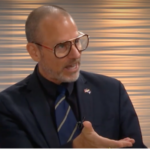Approximately 2.5 million public school students were enrolled in charter schools last school year, up more than 12 percent from last year and more than 30 percent from a decade earlier, a recent report from the National Alliance for Public Schools states, based on a February survey.
“Parents are increasingly voting with their feet,” said Nina Rees, president and CEO of the National Alliance for Public Charter Schools. “This is the largest increase in the number of students attending charter schools we’ve seen since [researchers began] tracking enrollment growth.”
There are 6,400 charter schools in the 42 states that permit them, with between 500 and 600 new charter schools opening each year, according to The National Alliance for Public Charter Schools.
But Kara Kerwin, president of the Center for Education Reform, warns, “Yes, charter school enrollment continues to grow, but according to the 2014 Survey of America’s Charter Schools, it’s growing at a steady, linear pace with an average rate of 340 schools per year. Growth must accelerate if charter schools are to play a central role in improving U.S. education and meeting parent demand for new and meaningful educational options.”
California Led Growth
California, reportedly led the nation in charter school growth last year, with 104 new schools.
The report from the National Alliance for Public Charter Schools also said about 200 public charter schools closed. The schools were closed for several reasons, including low enrolment, financial problems, and low academic performance.
“The goal of the charter school movement is not simply to increase the number of schools and students enrolled, but rather the number of high-quality public school options for families who need them most,” said Rees. “These closures reflect that, and we will continue to advocate for strong accountability measures to ensure that only high-quality schools are allowed to serve our nation’s students.”
Despite those closures, the number of public charter schools still grew by 7 percent over the 2012-2013 school year.
“The tremendous growth in charter schools over the past decade suggests that parents are enthusiastic about having new options outside of the traditional public school system,” said Lindsay Burke, an education expert at the Heritage Foundation. “The type of choice charters provide enables parents to better match educational options with their children’s unique learning needs, and they’re jumping at the chance.
“For the handful of states that still don’t allow charter schools to operate, growth in charter enrollment over the past year should demonstrate to them that they’re lagging behind the education innovation curve,” Burke said.
Neal McCluskey, Ph.D., of the Cato Institute offered a caveat, saying: “It is great that charters provide many kids much-needed options other than their traditional public schools. But as ‘free’ alternatives, charters have also been shown to draw heavily from private schools, and that is damaging a much more independent, valuable form of choice.”
D. Brady Nelson ([email protected]) is a Washington DC-based neo-Austrian economist, writer, and speaker from Brisbane, Australia and Milwaukee, Wisconsin, and is a regulation expert with The Heartland Institute.
Image by pedro reyes alejandre.





